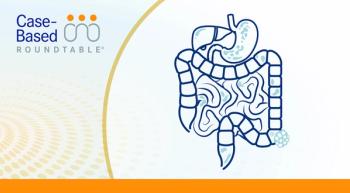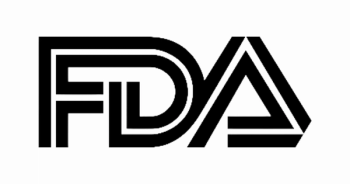
Nivolumab Plus Cabozantinib Improves Outcomes in Advanced Kidney Cancer
Nivolumab plus cabozantinib improved long-term efficacy and safety vs sunitinib in advanced renal cell carcinoma, per final CheckMate 9ER trial results.
Final follow-up results from the phase 3 CheckMate 9ER trial (NCT03141177), presented at the 2025 ASCO Genitourinary Cancer Symposium, showed that nivolumab (Opdivo) plus cabozantinib (Cometyx) provided superior long-term efficacy and a manageable safety profile compared with standard sunitinib (Sutent) in patients with previously untreated advanced renal cell carcinoma.
At the median follow up of 67.6 months (Range, 60.7-80.2) for the intention to treat population, the median progression-free survival (PFS) was 16.4 months (95% CI, 12.5-19.3) for patients who received nivolumab/cabozantinib and 8.3 months (95% CI, 7.0-9.7) for those who received sunitinib (HR, 0.58; 95% CI, 0.49-0.70); median overall survival (OS) was 46.5 months (95% CI, 40.6-53.8) vs 35.5 months (95% CI, 29.2-42.8), respectively (HR, 0.79; 95% CI, 0.65-0.96); and median duration of response (DOR) was 22.0 months (95% CI, 18.0-25.2) vs 15.2 months (95% CI, 10.9-19.3).
The overall response rate (ORR) was 55.7% (95% CI, 50.1%-61.2%) vs 27.4% (95% CI, 22.7%-32.6%) for patients in the nivolumab vs sunitinib arms, respectively. Of patients who received nivolumab/cabozantinib, 20.1% experienced a partial response (PR) with 60% or more tumor reduction, and 21.7% received a PR with less than 60% tumor reduction. In the nivolumab/cabozantinib arm vs the sunitinib arm, complete responses were observed in 45 and 15 patients, PRs in 135 and 75, stable disease in 104 and 136, progressive disease in 21 and 47, and unknown in 18 and 55.
“Long term efficacy benefit was observed with [nivolumab plus cabozantinib] over [sunitinib] in these final results from the CheckMate 9ER trial, with a median of 67.6 months follow-up,” presenting author Robert J. Motzer, section head of Kidney Cancer in Genitourinary Oncology Service and Jack and Dorothy Byrne Chair in Clinical Oncology at Memorial Sloan Kettering Cancer Center, and coauthors, wrote in the presentation. “The results continue to support [nivolumab plus cabozantinib] as a standard of care for previously untreated advanced RCC.”
A total of 651 patients were enrolled in the trial and randomly assigned, in a 1:1 ratio, to receive 240 mg of intravenous nivolumab every 2 weeks plus 40 mg of oral cabozantinib daily (n = 323) or 50 mg of oral sunitinib daily on 4 weeks on, 2 weeks off schedule (n = 328). Eligible patients had previously untreated advanced or metastatic RCC with a clear cell component who were in any International Metastatic RCC Database Consortium (IMDC) risk group.
The trial’s primary end point was PFS by blinded independent central review (BICR) per RECIST v1.1. Secondary trial end points include OS, ORR per BICR, and safety.
The median age was 62 years (range, 29-90) in the nivolumab/cabozantinib arm and 61 years (range, 28-86) in the sunitinib group; 69% and 71% of patients, respectively, had prior nephrectomy; 80% and 78% had 2 or more sites with target or nontarget lesions; 24% and 22% had presence of bone metastases; and 74% and 75% had less than 1% PD-L1 expression. The most common IMDC risk groups were intermediate (58% vs 57%), favorable (23% vs 22%), and poor (19% vs 21%).
Of patients in the IMDC favorable risk group, the median PFS in the nivolumab/cabozantinib group (n = 74) was 21.4 months (95% CI, 12.8-24.6) vs 12.8 months (95% CI, 9.4-16.6) in the sunitinib group (n = 72; HR, 0.67; 95% CI, 0.46-0.97); median OS was 53.7 months (95% CI, 40.8-70.7) vs 58.9 months (95% CI, 46.1-not evaluable), respectively (HR, 1.08; 95% CI, 0.70-1.66); and ORR was 66.2% vs 43.1%.
In the IMDC intermediate or poor risk group, the median PFS in the nivolumab/cabozantinib group (n = 249) was 15.4 months (95% CI, 11.1-18.6) vs 7.1 months (95% CI, 5.7-8.9) in the sunitinib group (n = 256; HR, 0.56; 95% CI, 0.46-0.69); median OS was 43.9 months (95% CI, 34.9-53.0) vs 29.2 months (95% CI, 23.7-36.0), respectively (HR, 0.74; 95% CI, 0.60-0.92); and ORR was 52.6% vs 23.0%.
Patients with liver metastases had a median PFS was 10.9 months (95% CI, 7.0-15.2) in the nivolumab/cabozantinib group (n = 73) and 6.2 months (95% CI, 2.9-8.3) in the sunitinib group (n = 56; HR, 0.55; 95% CI, 0.37-0.82); median OS was 37.6 months (95% CI, 23.5-49.9) and 22.1 months (95% CI, 9.9-29.3), respectively (HR, 0.65; 95% CI, 0.43-0.97); ORR was 52.1% (95% CI, 40.0%-63.9%) and 21.4% (95% CI, 11.6%-34.4%).
Of patients with bone metastases, the median PFS was 13.8 months (95% CI, 8.3-20.1) in the nivolumab/cabozantinib group (n = 79) and 5.3 months (95% CI, 3.9-8.2) in the sunitinib group (n = 75; HR, 0.43; 95% CI, 0.30-0.64); median OS was 34.8 months (95% CI, 21.4-58.9) and 20.7 months (95% CI, 12.7-29.2), respectively (HR, 0.66; 95% CI, 0.45-0.95); ORR was 49.4% (95% CI, 37.9%-60.9%) and 9.3% (95% CI, 3.8%-18.3%).
Those with lung metastases demonstrated a median PFS was 16.4 months (95% CI, 12.3-21.4) in the nivolumab/cabozantinib group (n = 241) and 8.3 months (95% CI, 6.9-9.7) in the sunitinib group (n = 251; HR, 0.56; 95% CI, 0.46-0.69); median OS was 47.5 months (95% CI, 40.6-55.8) and 32.4 months (95% CI, 24.6-38.0), respectively (HR, 0.75; 95% CI, 0.60-0.94); ORR was 57.3% (95% CI, 50.8%-63.6%) and 27.9% (95% CI, 22.4%-33.9%).
Additionally, 93% of patients in the nivolumab/cabozantinib group and 95% in the sunitinib group discontinued treatment; 43% and 55%, respectively, received subsequent systemic therapies; 26% and 31% received 2 or more subsequent systemic therapies; and the most common was any VEGFR inhibitor (79%) in the nivolumab/cabozantinib group and any PD-L1 inhibitor (81%) in the sunitinib group.
The median duration of therapy was 21.8 months (95% CI, 8.8-34.0) in the nivolumab/cabozantinib group and 8.9 months (95% CI, 2.9-20.7) in the sunitinib group; 62% and 55% of patients had at least 1 dose reduction; and the median time to first dose reduction was 4.1 months (range, 0.3-50.4) and 2.0 months (range, 0.2-50.1).
Regarding safety, common treatment-related adverse effects (TRAEs) of any grade occurred in 98% of patients in the nivolumab/cabozantinib group and 93% of the sunitinib group, and grade 3/4 TRAEs occurred in 68% and 55%, respectively.The most common TRAEs of any grade were diarrhea (60% and 46%, respectively), palmar-plantar erythrodysesthesia (39% and 42%), hypertension (34% and 35%), and hypothyroidism (37% and 31%). Also, 22% of patients to receive nivolumab/cabozantinib were administered corticosteroids to manage immune-mediated AEs of any grade. Any grade TRAEs led to discontinuation in 28% and 11%, respectively.
References
Motzer RJ, Escudier B, Burotto M, et al. Nivolumab plus cabozantinib (N+C) vs sunitinib (S) for previously untreated advanced renal cell carcinoma (aRCC): Final follow-up results from the CheckMate 9ER trial. J Clin Oncol. 2025;43(suppl 5):439. 10.1200/JCO.2025.43.5_suppl.439








































